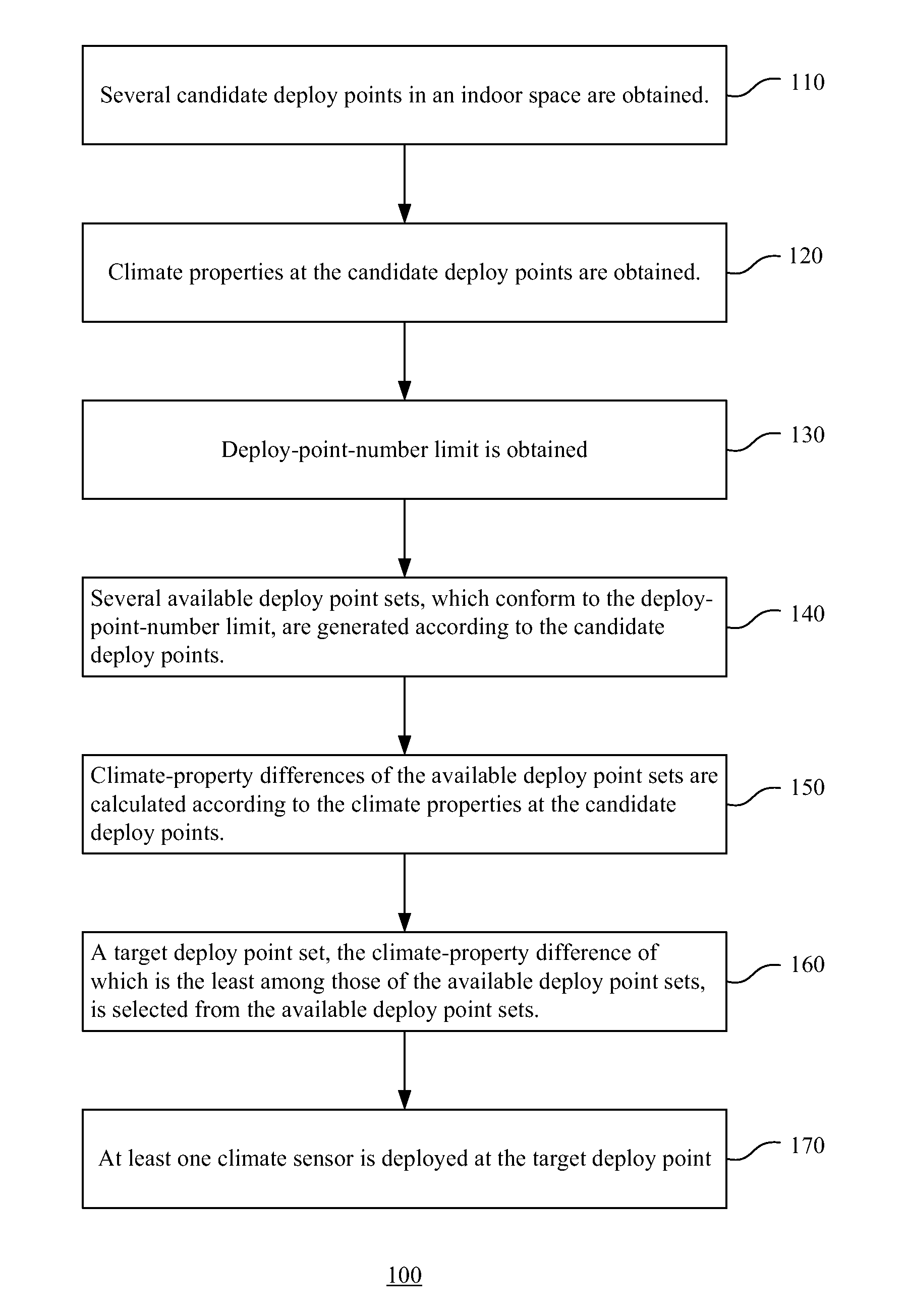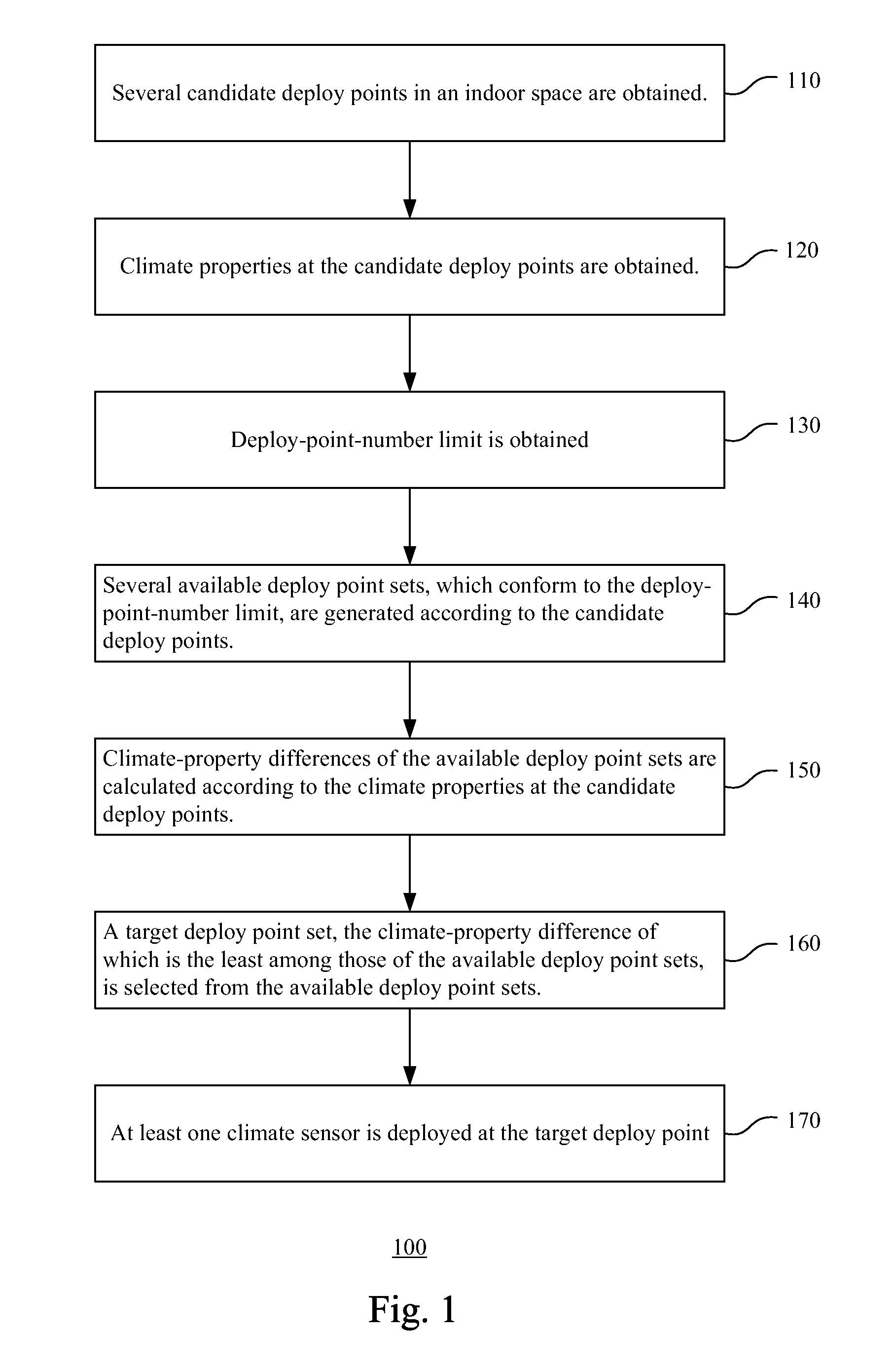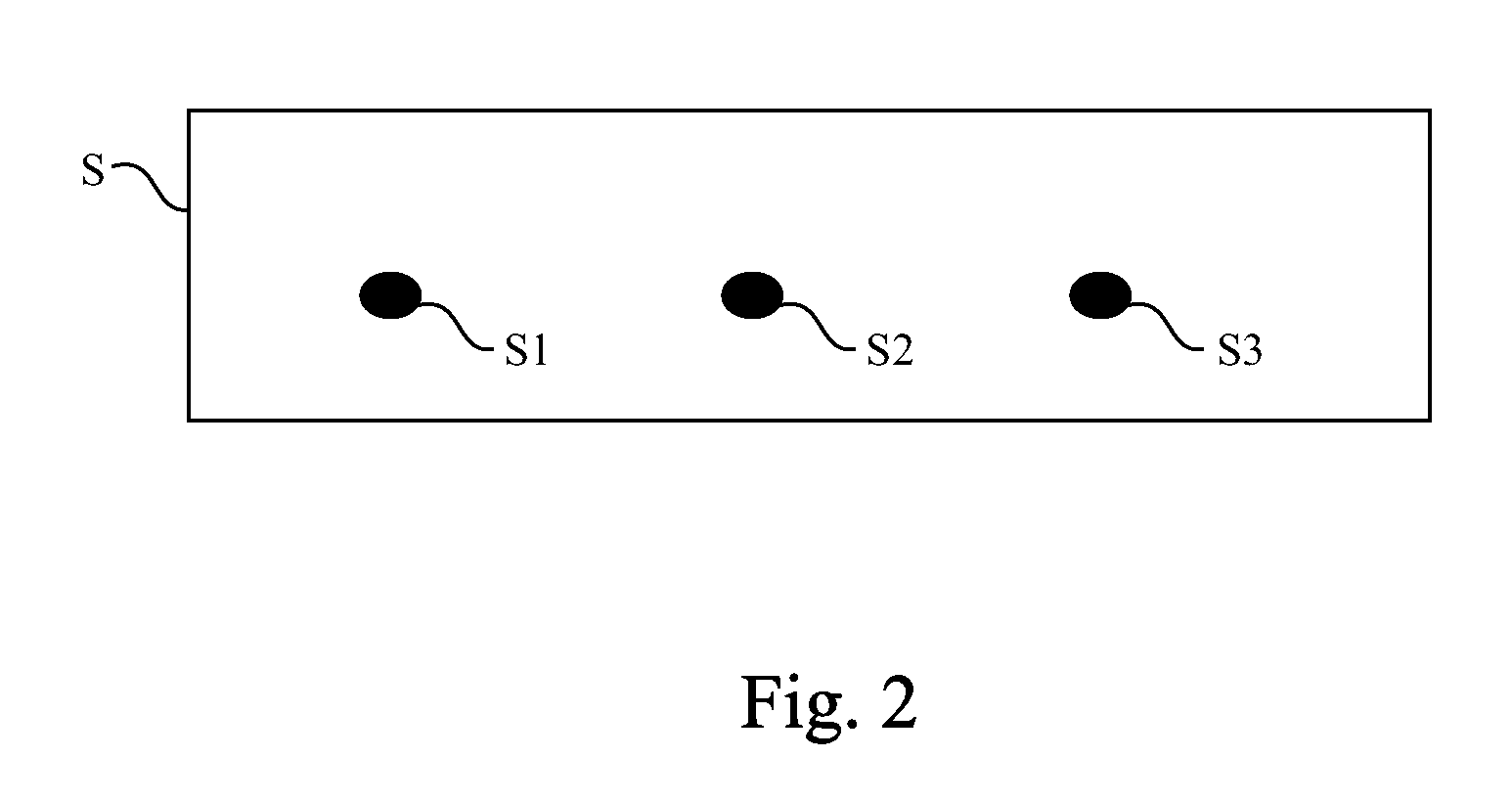Method for deploying climate sensor in indoor space and storage medium for storing thereof
a technology for climate sensors and indoor spaces, applied in the direction of heat measurement, instruments, machines/engines, etc., can solve the problems of increasing the power consumption of the central air conditioner, uneven temperature distribution in buildings with large indoor spaces, and uncomfortable people inside buildings with large spaces
- Summary
- Abstract
- Description
- Claims
- Application Information
AI Technical Summary
Benefits of technology
Problems solved by technology
Method used
Image
Examples
Embodiment Construction
[0014]Reference will now be made in detail to the present embodiments of the invention, examples of which are illustrated in the accompanying drawings. Wherever possible, the same reference numbers are used in the drawings and the description to refer to the same or like parts.
[0015]FIG. 1 is a flow diagram of a method for deploying at least one climate sensor in an indoor space according to one embodiment of this invention. FIG. 2 is an embodiment of an indoor space. In the method for deploying at least one climate sensor in an indoor space, at least one candidate deploy point, the climate property of which differs the least from the other candidate deploy points, is selected. Then, at least one climate sensor is deployed at the selected candidate deploy point. The climate sensor may be a temperature sensor, a humidity sensor, a light sensor or other types of climate sensors. The method for deploying at least one climate sensor in an indoor space may take the form of a computer pro...
PUM
 Login to View More
Login to View More Abstract
Description
Claims
Application Information
 Login to View More
Login to View More - R&D
- Intellectual Property
- Life Sciences
- Materials
- Tech Scout
- Unparalleled Data Quality
- Higher Quality Content
- 60% Fewer Hallucinations
Browse by: Latest US Patents, China's latest patents, Technical Efficacy Thesaurus, Application Domain, Technology Topic, Popular Technical Reports.
© 2025 PatSnap. All rights reserved.Legal|Privacy policy|Modern Slavery Act Transparency Statement|Sitemap|About US| Contact US: help@patsnap.com



